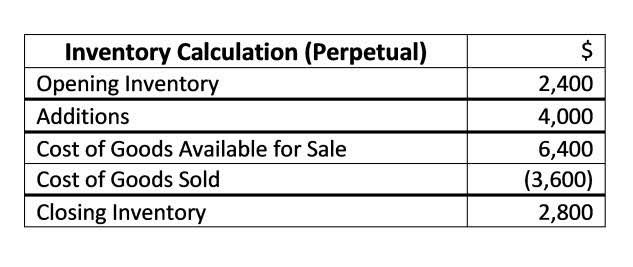
The whole point of understanding the change in working capital is to know how to apply it to your cash flow calculation when doing a DCF. If the change in working capital is positive, the company can grow with less capital because it is delaying payments or getting the money upfront. When a Financial Analyst is modeling a business, they might only have access to partial information from certain sources.

Free Cash Flow to Firm (FCFF)
The company’s cash flow will increase not because of Working Capital, but because the company earns profits on the sale of these products. Therefore, if Working Capital increases, the company’s cash flow decreases, and if Working Capital decreases, the company’s cash flow increases. Working capital is the money a business can quickly tap into to meet day-to-day financial obligations such as salaries, rent, and office overheads. Tracking it is key, since you need to know that you have enough cash at your fingertips to cover your costs and drive your business forward. If the change is negligible, in other words not much of a change either way, it could be because your net working capital is zero. It is a common feature of on-demand or just-in-time operations and is often a sign of efficiency.

Change in Net Working Capital (NWC) Calculation Example

And before you know it, you’ll have a snapshot of your business’s financial health. Inventory management describes the process of ordering and using raw materials and components to produce and sell finished products. The storage change in working capital formula of such materials, the work-in-progress, and the warehousing of the products for sale also fall under the umbrella term of inventory management.
- Second, it can reduce the amount of carrying inventory by sending back unmarketable goods to suppliers.
- These include land, real estate, and some collectibles, which can take a long time to find a buyer for.
- If your NWC balance sheet is becoming a cause for concern, then there are multiple ways in which you can improve the total at the bottom.
- Examples of current assets are cash on hand or cash equivalents, and any accounts receivable, marketable securities, and stock inventory that can be converted to cash within one year.
- From Year 0 to Year 2, the company’s NWC reduced from $10 million to $6 million, reflecting less liquidity (and more credit risk).
Leveraging Positive Net Working Capital
Working capital represents operating liquidity, and is also commonly referred to as net working capital (NWC). Having negative working capital is not always alarming, as long as there is a reason why the working capital is negative. NWC is most commonly calculated by excluding cash and debt (current portion only). The Net Working Capital Ratio is like a measuring tape for a business’s short-term money compared to everything it owns. The suppliers, who haven’t yet been paid, are unwilling to provide additional credit or demand even less favorable terms.
How Can I Benchmark My Company’s Change in Net Working Capital?

Positive working capital implies enough liquidity to meet short-term debts. In industries like retail and ecommerce, they often face huge fluctuations in inventory levels. In this case, the negative ratio may show operational efficiency sometimes. A good net working capital ratio is indicative of your company’s financial health. It depicts the balanced manner Cash Flow Management for Small Businesses in which a business manages its debts, while also putting enough cash into long-term investments for the scaling of the business.
- For example, if a company has $1 million in cash from retained earnings and invests it all at once, it might not have enough current assets to cover its current liabilities.
- On the other hand, negative NWC can serve as a warning—reflecting impending liquidity issues.
- Current liabilities encompass all debts a company owes or will owe within the next 12 months.
- The status of a company’s credit line can have an impact on the net working capital.
- It might indicate that the business has too much inventory or isn’t investing excess cash.
CFI is the global institution behind the financial modeling and valuation analyst FMVA® Designation. CFI is on a mission to enable anyone to be a great financial analyst and have a great career path. In order to help you advance your career, CFI has compiled many resources to assist you along the path. At the very top of the working capital schedule, reference sales and cost of goods sold from the income statement for all relevant periods. These will be accounting used later to calculate drivers to forecast the working capital accounts. It might indicate that the business has too much inventory or isn’t investing excess cash.
- It shows how efficiently a company manages its current resources, such as cash, inventory, and accounts payable.
- The company has a claim or right to receive the financial benefit, and calculating working capital poses the hypothetical situation of liquidating all items below into cash.
- Net working capital is a collection of your currently available assets, as well as your short-term debts and liabilities.
- Read this page slowly, and download the worksheet to take with you because the whole topic of changes in working capital is very confusing.
- This indicates that the company is very liquid and financially sound in the short-term.
- Keeping financial obligations under control while maximizing profitability is also tricky.
Calculate the Current Liabilities for the Current and Previous Year
This is because you analyse the impact of current assets and fixed assets on the risk and return of your business. There are three important ways in which your current asset management differs from fixed assets management. In this article, you will learn about managing current assets that act as a source of short-term finance for your business.
